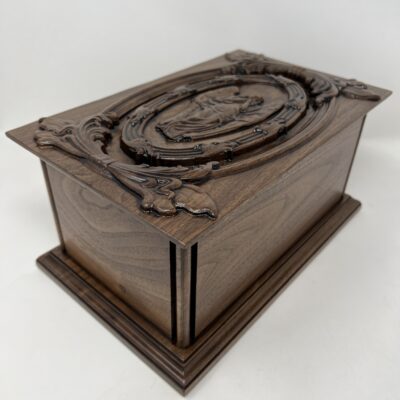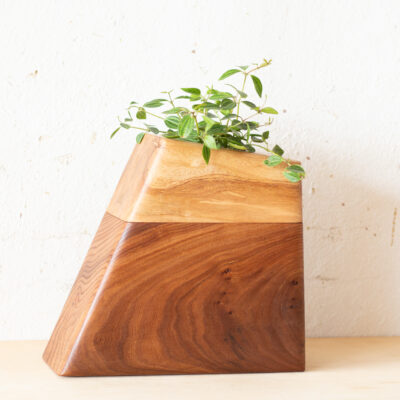Funeral traditions are fascinating.
Whether you’re working on a research project, planning your own or a loved one’s funeral, or are simply interested in the rituals and traditions that various cultures have developed, this is a topic filled with meaning, mystery, and – sometimes – macabre mythology.
Historians have discovered funeral rituals dating as far back as 60,000 BC. Every culture has had three common denominators regarding death:
- Ceremonies
- Special places for burial or placement
- Some sort of memorial or monument
The things our culture may find strange are perfectly acceptable in other cultures. Read on to find out what we have in common and how we differ.
US Funeral Customs
Visitations & Viewings
A viewing is done prior to the funeral service – it can be held at a church or funeral home. Friends and family are invited to attend in order to view the body.
A visitation is when the family makes themselves available to friends and family who wish to express their condolences directly to them.
More: Visitation Etiquette & Expectations
Traditional Funerals
What makes a “traditional” funeral?
It usually includes 1) a viewing or visitation followed by 2) a formal funeral service, which includes eulogies, readings, prayers, and hymns, ending with 3) the use of a hearse to take the casketed body to the cemetery for burial or entombment.
When we think of traditional funerals in the United States, the most common elements will include a somber, solemn aura, everyone dressed in black, the body of the decedent in a casket, a religious memorial service, a hearse, and a burial at a cemetery.
Urns Made in the USA
Learn more: Funeral Planning Guide
Cemetery Burial
A burial is also known as an interment. Burial is a form of final disposition in which a casketed body is placed into a hole in the ground.
Burial is seen as respect for the dead. But practically speaking, it was a way to keep the animals from eating a body and to keep the smell of decaying flesh at bay. However, this was no longer necessary once metal caskets and concrete vaults came into use.
There is no nationwide regulation of grave depth, and it is a common fallacy that bodies must be buried six feet deep. Requirements for depth differ according to soil type and the method of burial. California requires nineteen inches of soil to cover a casket but more commonly thirty to thirty-six inches are required in most places.
More: Everything You Need to Know About Burial
Reception or “Repast”
A repast after a funeral service is a way to show support as a family. It helps the community of friends to get together and honor the family.
Repasts can be held almost anywhere – a banquet hall, a restaurant, your church, or even your home. You can invite everyone that attended the funeral, or you can give private invitations to your closest friends and family members.
More: Funeral Reception Planning Guide
Other US Funeral Traditions
Other customs and observances to honor the dead and comfort their grieving family members include:
- Pallbearers
- Embalming
- Open casket
- Funeral procession
- Wearing black
- Sending flowers
- Bringing food to the family
Funeral Traditions Around the World
1. Sikhi (Sikhism)
Sikhs believe in reincarnation, and most are cremated after they die. When a Sikh is nearing death, the family gathers with them. They recite the Hymn of Peace. The one dying will try to respond with the name of God.
After death the body is washed and dressed in traditional Sikh clothing. Cremation should take place within a day. The deceased will be placed in a casket and taken before their holy scripture (Guru Granth Sahib). Prayers are said and readings from their scripture are recited.
While the cremation is taking place, prayers are recited. Cremated remains may be either placed in water or buried.
2. Islam
Islam teaches that the body stays in the casket until Judgement Day. This space of time is considered a trial where angels will question the person about their practices and beliefs. On Judgement Day a horn will sound and the dead will be resurrected to face their final judgement.
Muslims believe in physical resurrection, and they discourage cremation. Burial should take place within twenty-four hours after death.
3. Death Beads – South Korea
Cremation has become much more popular in South Korea since 2000 when a law was passed that requires anyone burying a loved one to remove the grave after sixty years. Graveyard space is becoming scarce in the country. After cremation, some families opt to have “death beads” made.
There are numerous companies that now compress cremains into gem-like beads. They are colored in turquoise, pink or black. These beads are then displayed in their homes.
4. Day of the Dead – Mexico
The Day of the Dead (el Día de los Muertos) is a funeral tradition that originated in Mexico. To observe this festival, altars are set up in the home or graveyard to remember those who have died. These altars are then loaded down with offerings. The main offerings are food, candles, drink, photos, and marigolds.
It is typically held on November first and second. Though, depending on which region you live in, it might also include October thirty-first or November sixth.
5. Catching Up with the Dead – Madagascar
Every five to seven years, the Malagasy tribe of Madagascar has a tradition called “Famadihana,” which is “the turning of the bones.”
In this ritual, people bring the bodies of loved ones from their burial sites, wrap them in fresh linens, spray them with fragrance and dance with them. They see it as a time to share stories with their deceased loved ones and ask for blessings.
6. Sky Burial – Tibet
The Buddhists of Tibet believe in the ritual of Sky Burial. In this ceremony, the bodies are left outside. They are often cut up into pieces, for birds or other animals to consume.
This serves two purposes: it gets rid of the body and allows the soul to depart. The ritual embraces the circle of life and gives nourishment to animals.
7. Water Burial – Northern Europe
The Nordic countries use the seas surrounding them in the rituals of the dead. They lay open coffins on top of cliffs facing the water to even using the water as a burial ground. Giving the bodies back to the gods, some folks set bodies adrift in “death ships,” sailing away down a river or off into the ocean.
Click here to learn more about sea burials.
8. The Parade – India
Another Indian tradition is parading the dead through the streets. The deceased are dressed in colors that highlight their virtues – for example, red signifies purity and yellow signifies knowledge – this is done to encourage souls to reach salvation, and end the cycle of reincarnation. The bodies are sprinkled with with water from the Ganges and then cremated.
9. Rented Burial Plots – Germany
Cemeteries in Germany are almost soley church- or state-operated. Sometimes exceptions are made for people with special religious needs. Muslims groups, for example, are permitted to have their own cemeteries.
In most cemeteries plots are usually rented for a certain period of time, usually twenty to thirty years. There is the possibility of an extension. Eventually, the plot will be used for another body, that is, once the mourners themselves have died.
10. Judaism
In Judaism the decedent is not left alone between the time of death and the burial. The synagogues and communities have a burial committee, also called the Chevra Kadisha. The members wash and shroud the dead. Then they sit with them until burial takes place. The ladies take care of women who have died and men take care of the men. Burial will take place as quickly as possible after death.
Bizarre & Unusual Funeral Customs
Here are a few customs and rituals that our culture might find “different,” but very interesting.
11. Releasing the Spirit – Aboriginal Austrailia
In the society of Aboriginal Australia, the people believe that when someone dies the spirit goes back to the land before being reborn. A smoking ceremony is held at the residence of the decedent; the ceremony drives the spirit away and encourages it on to its next journey. The body will be placed on a tall platform, covered with leaves, and left to decompose.
12. Escape the Rebirth Cycle – India
The most sacred river to the Hindus is the Ganges, which is worshiped as the goddess Ganga. In the Hindu faith, it is believed that if the ashes of the deceased are scattered in a holy place, such as Varanasi, they may escape the cycle of rebirth and go straight to heaven.
13. The Tower of Silence – Iran
Zoroastrianism is one of the oldest recorded monotheistic religions. In this tradition, a dead body is believed to defile everything it touches. This includes fire and the ground. So raising a body to the sky for vultures to pick clean was the only option.
The body is placed on top of the Tower of Silence, but only after it has been cleaned with bull urine and the clothing cut off with tools that are later destroyed. In this way, the bodies are kept out of the way of the living who could be contaminated by them.
14. The Dead are Smoking – Philippines
The Tinguian people dress the deceased’s bodies in their finest clothes, place them in chairs with lit cigarettes in their mouths. The bodies will remain in these positions for several weeks to come.
15. Skull Burial
On the Pacific Island of Kiribati, the tribes’ people lay their dead out in their homes. They may stay in the home for lup to twelve days, just depending on their status. After this, they will be buried. After a few months, the body will be dug up and the skull will be removed.
The skull will be cleaned up, polished, and displayed in the home.
Related: Unusually Interesting Death Rituals
Modern Funeral Traditions
The death industry changes with the times. They try to keep up with changing customs and inflation. Still, you will find many common themes, celebrations, and traditions that recur. Here are some popular ones.
Life Celebration
Celebrations of life are usually held after the physical remains have been buried or cremated. The celebration of life takes the place of a traditional funeral service.
Friends and family come together to celebrate the unique life that the decedent has lived. It’s not a time for mourning, but a time to celebrate.
More: 100 Incredible Celebration of Life Ideas
Cremation
Cremation is one alternative to a traditional burial. The body is placed into the retort or cremation chamber. The retort uses heat (1,400 to 1,800 degrees Fahrenheit) to reduce the body to bone and ashes. These ashes are called cremated remains or cremains.
The cremains are put into a container called an urn. Once placed in the urn, the cremated remains are returned to the family.
More: 14 Questions to Ask When Considering Cremation
Scattering Ashes
Many people want their cremated remains to be scattered. This can be done on land, sea, or from the air. Most states do not have laws prohibiting scattering, but there are laws regulating it. An example from California is you are not permitted to scatter in lakes, rivers, or streams.
Scattering from air is allowed but you aren’t allowed to drop any objects that could potentially injure people or property, according to federal law.
You must always check where and how to legally scatter cremated remains.
Related: What to Say When Scattering Ashes
Creative Uses for Cremated Remains
Cremation has become the standard disposition method in the USA and elsewhere around the world. With cremation comes a wide range of options for what to do with the cremated remains or “ashes,” including:
- Plant ashes to grow a tree
- Turn ashes into a diamond
- Unique cremation urns
- Memorials made from the ashes
- … and many more, see here
Death Doulas
Death doulas, also called death midwives, enrich the end of life for patients, family, and friends. It would take a very special person to be a death doula. You will be dealing with advance care planning, coordinating family caregiving, life review, vigil planning, respite care, and aftercare.
More: What Is a Death Doula?
DIY Funerals at Home
After a loved one has died, some people plan a DIY funeral. A family may call on a funeral director to embalm, keep the body until the funeral, or purchase a casket.
There are no laws prohibiting home burial. But you must check local zoning laws for restrictions on home or backyard burials. You have to own the property that you are burying your loved one on. This means a lot families have an option other than burying a loved one in a cemetery.
In all fifty states, the legal next of kin has custody and control of the body after death. You can carry out post-death functions. This includes bathing and dressing the body and holding any type of ceremony you would like.
More: How to Have a Funeral at Home
Green Funerals, Natural Burial, and Eco-Friendly Options
Green, natural, and eco-friendly burials bury without chemicals, vaults or metal caskets. It is designed to have a negligable impact on the environment. You can opt for a bio-degradable casket or even a burial shroud.
It takes around four to six weeks for the body to decompose in this type of burial. The gravesite will return to nature.
More: How to Celebrate Your Loved One with a Green Funeral
Personalized Memorials
Personalized memorials are a wonderful way to pay tribute to a loved one. This is a tangible object that honors someone’s memory. It should include their full name, dates of birth and death, a photo, and a line or two of tribute.
Discover more: 50+ Meaningful Memorial Ideas
Funeral traditions are ever-evolving, and the death industry adapts to accommodate changing needs and desires for the way people honor their dead.
Embalming methods change, casket designs go from square corners to rounded corners, and more women are in the industry. One thing is for certain, and that is death. How will you be remembered, and how do you want to honor the lives of those you love? These are important things to consider.
Read Next: 10 Types of Funeral Services & Ceremonies





